First published in The Emporia Gazette October 10, 2006
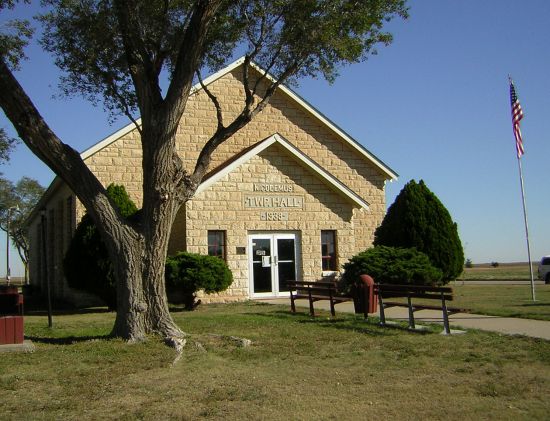 |
NICODEMUS
by Cheryl Unruh
“We’re here because the story of how African Americans settled the west has not been told,” Sherda Williams said.
And so the Nicodemus National Historic Site tells that story of struggle, strength and spirit. Williams is the site superintendent.
On a recent weekend drive north and west, Nicodemus, in Graham County, was one of many small towns that Dave and I explored.
Established in 1877 by former slaves, Nicodemus is the oldest surviving community west of the Mississippi River that was settled by African Americans.
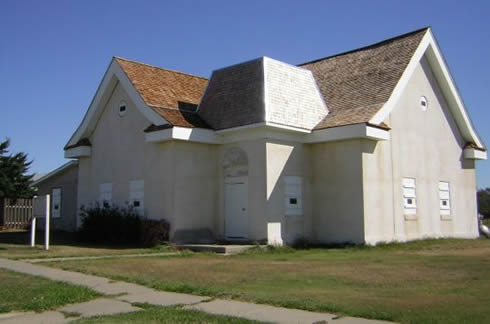
The old First Baptist Church
In his book “Great Plains,” Ian Frazier writes about Nicodemus. That essay is one of the most moving pieces I’ve read about a Kansas setting.
Frazier stumbled onto the town’s “Homecoming” celebration, an annual July event.
In Township Hall, which is now the National Park Service headquarters for Nicodemus, Frazier watched a fashion show of ladies’ hats. After women had modeled the hats, they began to dance as the loudspeaker played “When Doves Cry” by Prince.
“Suddenly I felt a joy so strong it almost knocked me down,” Frazier wrote. “It came up my spine and settled on my head like a warm cap and filled my eyes with tears, while I stood there packed in with everybody, watching Mrs. Robinson’s lovely daughters dance.”
“Nicodemus, a town with reasons enough to hold a grudge, a town with plenty of reasons not to exist at all, celebrated its Founders’ Day with a show of hats and a dance revue.”
“To me, and maybe to others in the room, the sight of so many black people here on the blue-eyed Great Plains was like a cool drink of water,” he said.
As Frazier continues, he suggests that the topography, the open plains, creates an atmosphere of happiness.
However, an atmosphere of happiness was not necessarily the case in 1877 when 300 African Americans came from Kentucky. Promoters had touted this to be one of the most harmonious places on earth.
And that it may be. Now. However, these folks, used to the cultivated farmland and wooded hills of Kentucky, moved to a barren prairie. Without trees, they had no lumber. Like other homesteaders, they learned about Kansas winters the hard way – while shivering in their dugouts.
Arriving in September, there was no time to plant and harvest crops or to hunt and store food. That first winter was tough.
“There are stories of either the Osage or the Pottawatomie coming by and dropping off meat to help out,” Williams told us.
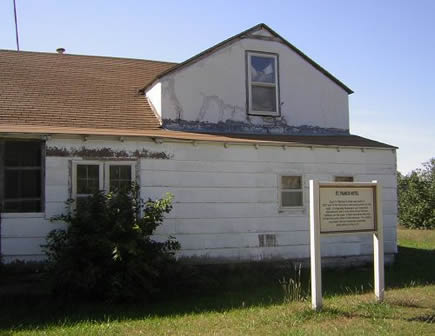
St. Francis Hotel/Fletcher-Switzer residence
At its peak, the community may have had 700 residents. In the 1880s, the Union Pacific Railroad bypassed Nicodemus, laying its tracks through the nearby town of Bogue.
The population gradually diminished. Currently there are 34 people in town, including six children. Those living here have either married into a family or are direct descendents of those early residents. Land is not sold; it stays in a family.
The National Park Service recognizes five historic buildings – the Nicodemus School, the Old First Baptist Church, the St. Francis Hotel/Fletcher-Switzer residence, the A.M.E. Church, and the Township Hall.
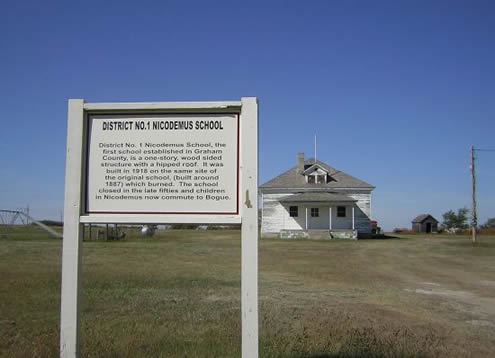
In Township Hall, Dave and I asked questions of Williams, looked over the displays and watched three feature stories that had been aired on national TV. The videos offered a brief history of the town and described the deep bonds that connect the descendents to each other and to this place.
Although travelers could sail past Nicodemus on U.S. Highway 24 and assume that it’s merely another small Kansas town, this place has a history unlike any other in the state.
The National Historic Site recounts the life and times of the community, but I believe there’s more to Nicodemus than all the stories can possibly tell.
***
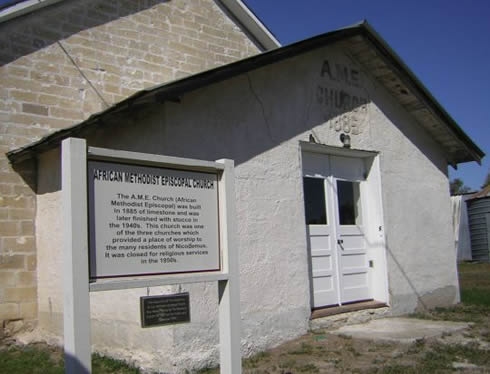
A.M.E. Church
Copyright 2006 by Cheryl Unruh
All Content Copyright 2004-2005 by Cheryl Unruh
Text by Cheryl Unruh | Web Design: Dave Leiker
Photography by Cheryl Unruh & Dave Leiker